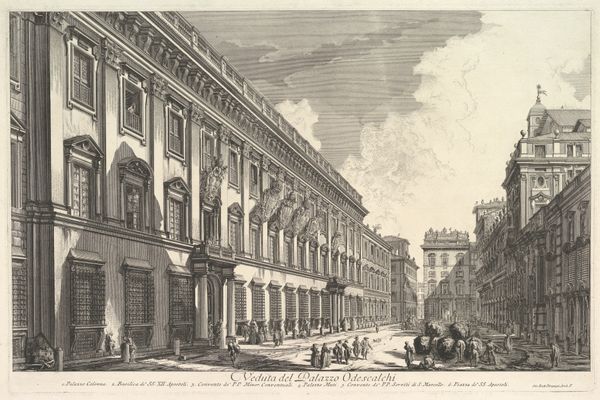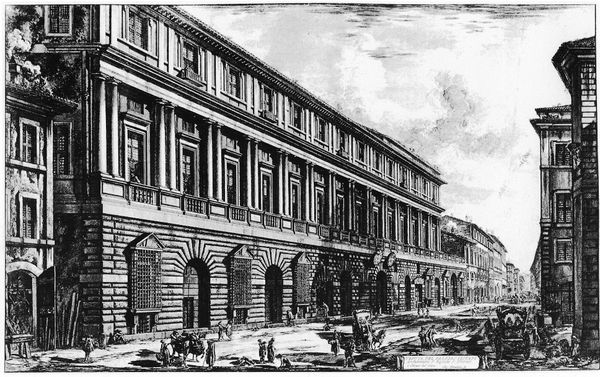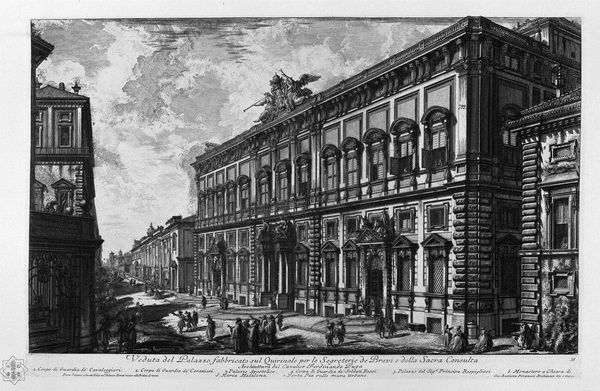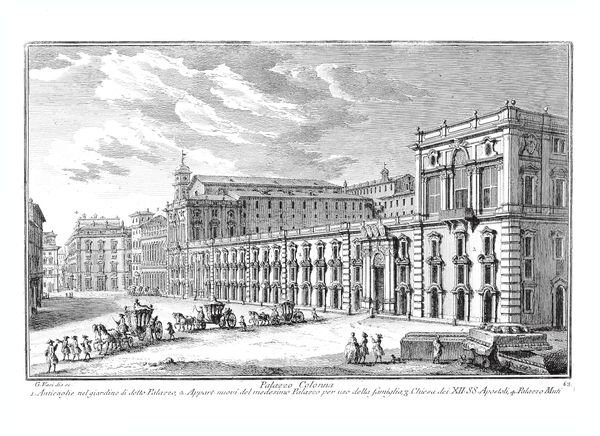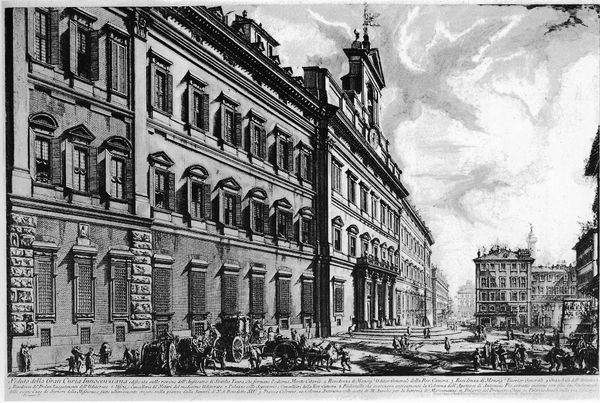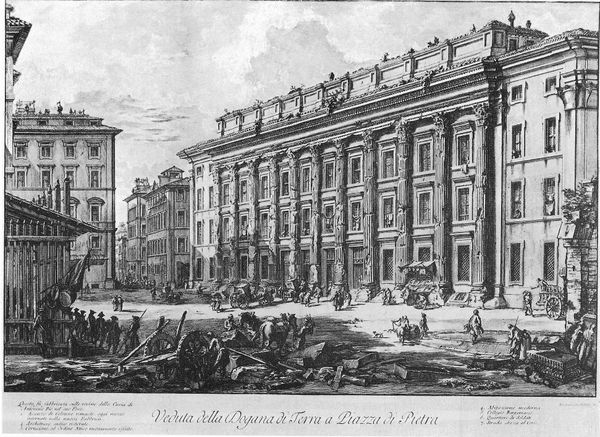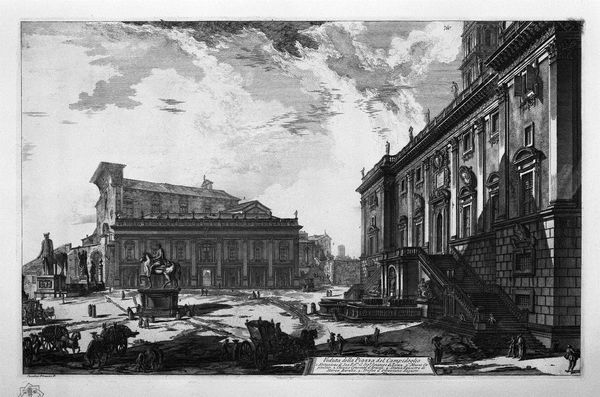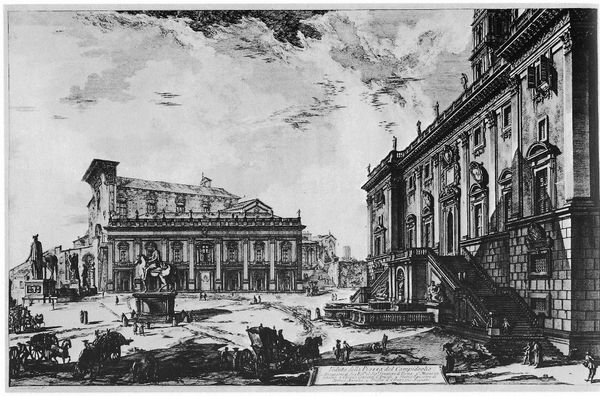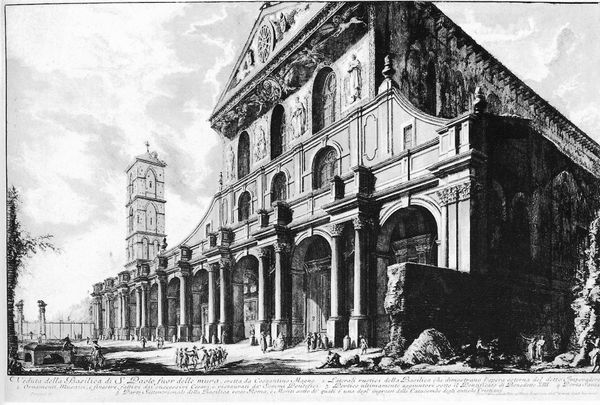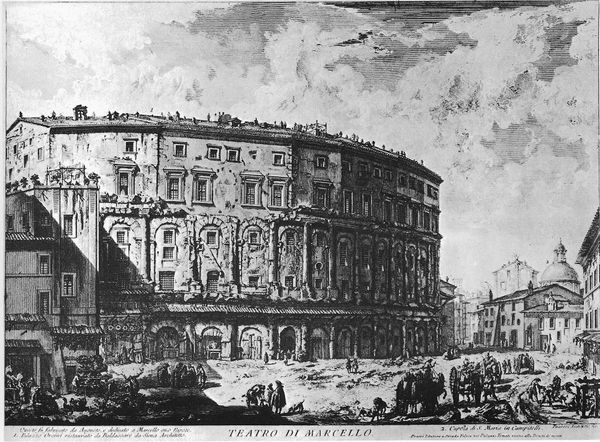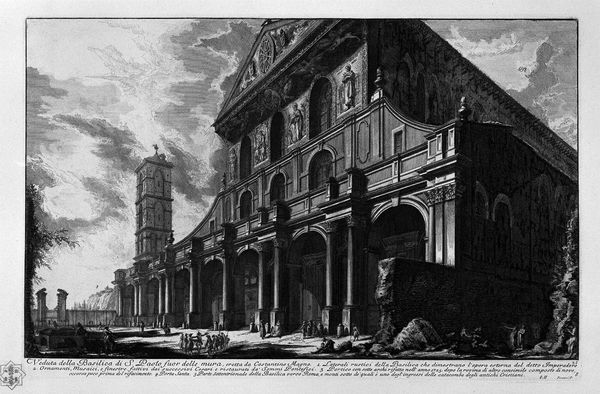
print, etching, architecture
#
architectural landscape
#
baroque
# print
#
etching
#
sculpture
#
greek-and-roman-art
#
landscape
#
romanesque
#
architecture drawing
#
cityscape
#
architecture
#
ruin
#
building
Copyright: Public domain
Curator: What strikes you first about this print, entitled "Vedute di Roma," etched by Giovanni Battista Piranesi? Editor: Immediately? It's imposing! I feel like an ant looking up at these grand, looming structures. The perspective makes them feel absolutely gigantic, almost theatrical in scale. There's also this incredible, almost palpable silence. Like the whole city is holding its breath. Curator: That sense of scale is something Piranesi excelled at conveying. As part of a series, these prints sought to capture the grandeur and historical weight of Rome, referencing both its glorious past and its contemporary urban landscape. He focuses heavily on Roman and Baroque architecture, offering insights into the cityscape through detailed renderings of buildings, ruins, and monuments. What do you make of the visual language here? Editor: The detail is astonishing! You can almost feel the texture of the stone, see the individual cracks and weathering. It reminds me a bit of those hyper-realistic architectural renderings, but with an added layer of romantic decay. There’s a strange allure to these scenes of organized entropy. Are the little figures props or key narrative agents? Curator: I think they serve both purposes. Piranesi places tiny human figures throughout his "Vedute" – partially to emphasize scale and provide a sense of everyday life amidst these monumental structures, but also as reminders of the continuous human presence that bears witness to the passage of time. It grounds the idealized grandeur with a sense of relatable existence. There are many echoes in their costuming and attitudes of the distant past. Editor: And that is fascinating. There is a palpable sense of history layered upon history; even in what initially seems to be 'mere' architectural representation. The choice of black and white also contributes; muting the visual noise and drawing you into the timelessness. It's somber, but strangely beautiful. There is drama too, even in something as apparently simple as a city scene in print. I love the theatrical effect! Curator: Exactly. He invites us to consider how the present is constantly shaped and haunted by what came before; history itself becomes a palpable, architectural presence in our lives. This piece invites a slow viewing, one that unravels the cultural continuity inherent to how spaces exist and transform through time. What’s your lasting impression? Editor: I suppose the enduring resonance is this idea of architecture embodying memory – like walking through these grand structures isn’t just an aesthetic experience but an engagement with the very soul of Rome itself. As for this representation: technically brilliant, evocative in mood; it captures an overwhelming feeling that only deepens the more you explore its depths.
Comments
No comments
Be the first to comment and join the conversation on the ultimate creative platform.
